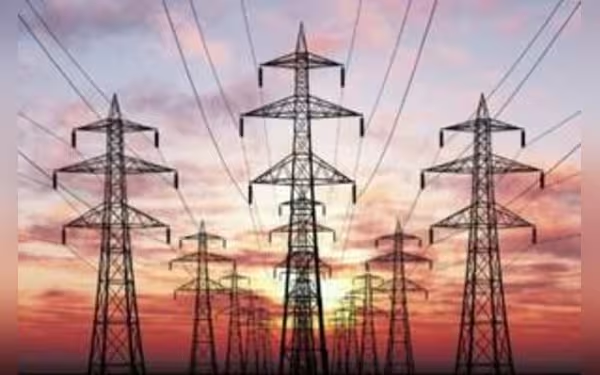Thursday, November 7, 2024 12:35 PM
India's Power Consumption Surges with Economic Growth
- Power consumption reached 140.47 billion units in October.
- India's economy is projected to grow by 7.8 percent in 2023.
- Renewable energy initiatives aim for 500 GW capacity by 2030.
 Image Credits: menafn
Image Credits: menafnIndia's power consumption rises to 140.47 billion units, reflecting strong economic growth and a commitment to renewable energy initiatives.
India's power consumption has seen a notable increase, reaching 140.47 billion units (BU) in October. This marks a one percent rise compared to the same month last year, which had already recorded a significant jump of over 22 percent. The rise in power consumption is largely attributed to the growing demands from both the industrial and agricultural sectors of India's rapidly expanding economy.
In October 2023, power consumption rose from 113.94 BU in October 2022 to 139.44 BU. This increase reflects the ongoing economic growth, with the International Energy Agency (IEA) predicting that India will experience a higher surge in energy demand than any other country in the coming decade. The IEA's World Energy Outlook highlights that India's size and the scale of rising demand across various sectors will drive this increase.
India has emerged as the fastest-growing major economy in 2023, with an impressive output growth of 7.8 percent. The country is on track to become the third-largest economy globally by 2028. The IEA's report indicates that by 2035, iron and steel production is expected to grow by 70 percent, while cement output is projected to rise by nearly 55 percent. Furthermore, the stock of air conditioners is anticipated to increase by over 4.5 times, leading to electricity demand from air conditioners in 2035 surpassing Mexico's total expected consumption for that year.
As a result, India's total energy demand is set to rise by nearly 35 percent by 2035, with electricity generation capacity expected to nearly triple to 1400 GW. The IEA also noted that coal will continue to play a significant role in India's energy mix over the coming decades. By 2030, nearly 60 GW of coal-fired capacity will be added, despite the growing emphasis on renewable energy sources.
India is making substantial strides in green energy initiatives. The National Electricity Plan (Transmission), launched recently, aims to transmit 500 GW of renewable energy installed capacity by 2030 and over 600 GW by 2032. This plan includes the development of storage systems, such as 47 GW of Battery Energy Storage Systems and 31 GW of Pumped Storage Plants, to support renewable energy generation.
Additionally, a comprehensive transmission system is being planned to deliver power to Green Hydrogen and Green Ammonia manufacturing hubs located at coastal sites like Mundra, Kandla, and Vizag. The National Electricity Plan outlines the addition of over 191,000 km of transmission lines and 1270 GVA of transformation capacity over the next decade. The inter-regional transmission capacity is also set to increase significantly, enhancing connectivity with neighboring countries.
India's rising power consumption is a clear indicator of its robust economic growth and increasing energy demands. While coal continues to be a major player in the energy landscape, the country's commitment to renewable energy and sustainable practices is commendable. As India moves forward, balancing traditional energy sources with innovative green technologies will be crucial for ensuring a sustainable and prosperous future.













